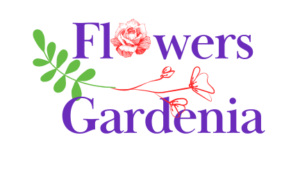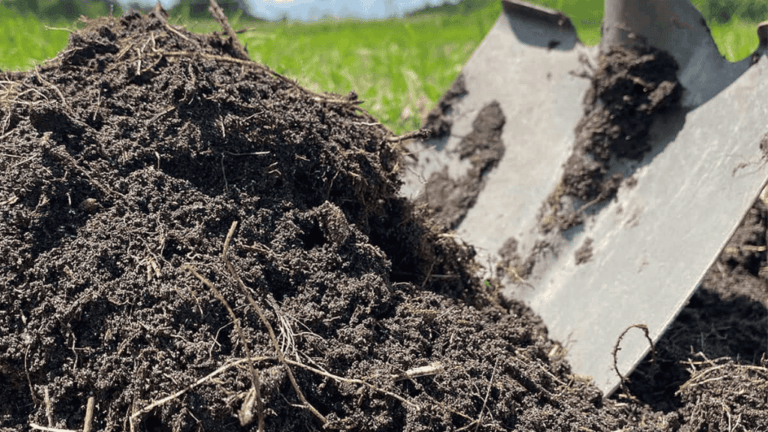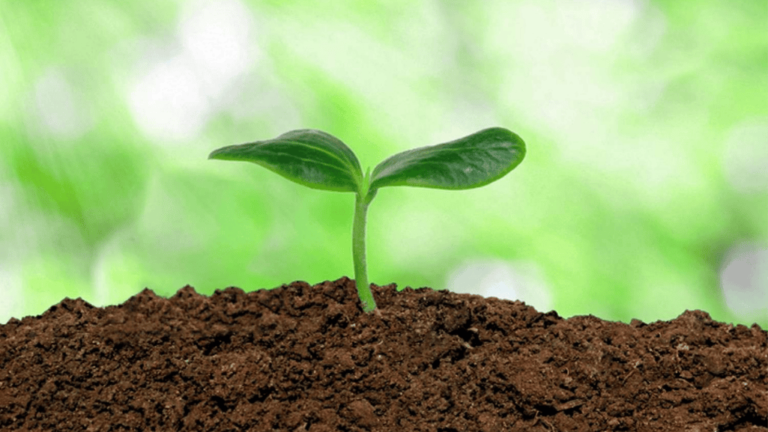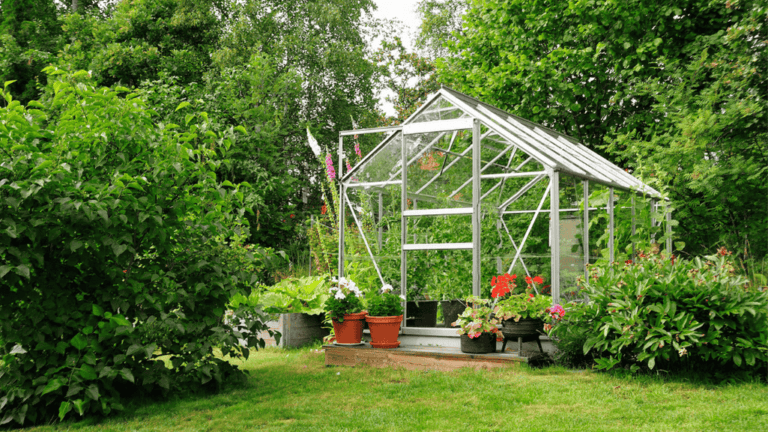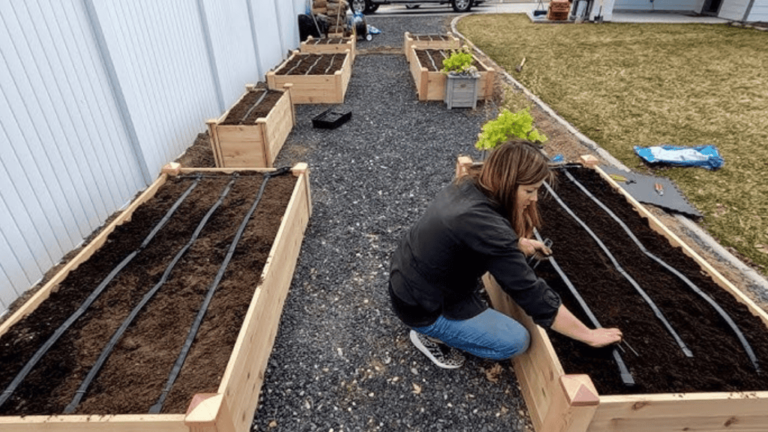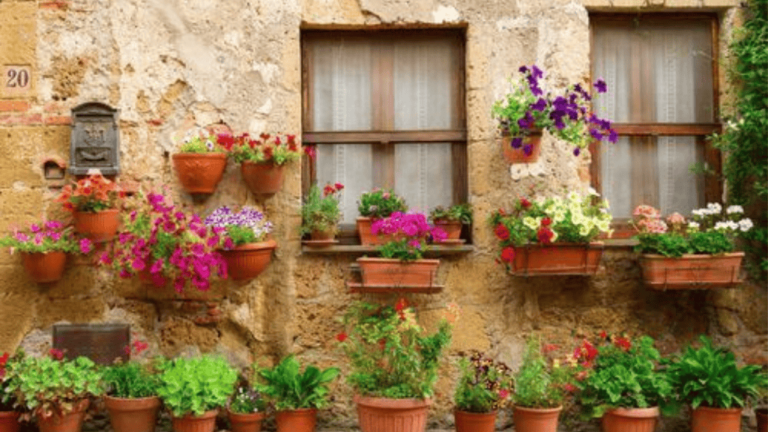Beautiful flowers gardenia Plants For Your homes

More people are turning to gardening raised beds for their lush, productive gardens. These elevated garden beds change how both new and seasoned gardeners grow their plants. They offer better drainage, top-notch soil, and a longer growing season. For those looking for gardening in raised beds, the benefits include more produce and easier access for gardeners with mobility issues.
Statistics back up the move to these raised structures. Raised beds warm up faster in spring and let gardeners control the soil and drainage. This is key for healthy plants. In places with lots of rain or hard clay soil, raised garden beds ensure good drainage. They also make gardening accessible for everyone. With the right setup, gardeners can enjoy both beauty and benefits for years.
Key Takeaways
- Gardening raised beds offer superior soil control and improved drainage.
- Extended growing seasons are a reality thanks to raised beds’ ability to warm quickly.
- Maintaining raised garden beds involves consistent watering and annual crop rotation.
- Accessibility for gardeners of all abilities is enhanced with elevated garden beds.
- Companion planting leverages the space in raised beds and helps deter pests.
- Organic mulch in raised beds plays multiple roles in moisture retention, temperature control, and weed suppression.
Thoughtful construction and design of garden beds are key to a successful and visually appealing garden space.
Understanding the Basics of Gardining Raised Beds
Raised bed gardening is a smart way to grow plants. It lets you control the soil and environment for better harvests. More and more gardeners are trying it out because it has so many benefits.
What is Raised Bed Gardening?
Raised bed gardening means growing plants in soil that’s higher off the ground. The soil is in a box made of wood, stone, or composite materials. This method saves space and makes caring for the soil easier. By picking the right soil mix, gardeners can help plants grow better especially in poor soil areas.
Choosing Your Raised Bed Location
Where you put your raised bed is key for good growth. Pick a spot that gets at least six hours of sunlight a day. It should also be easy to water, near a hose or a water source. Being close to your house helps with checking on your garden and controlling pests.
Determining Raised Bed Size and Shapes
The size and shape of your raised bed matter for your gardening success. Common sizes are 4×4 feet for beginners and bigger ones like 4×8 feet or 8×8 feet for more gardening. Raised bed design ideas let you get creative with shapes like circles, hexagons, or tiered beds. These designs are practical and make your garden look better.
Using raised garden bed ideas helps you grow more and avoid common gardening problems like bad drainage and pests. With the right design, your garden can be both beautiful and productive. The Growing a Greener World team shows how raised beds solve many gardening issues effectively.
Advantages of Elevated Garden Beds
The benefits of raised beds go beyond looks. They create a perfect spot for plants to grow and make upkeep easy. These beds solve common gardening problems and use resources well.
Improvement in Soil Quality
One big plus of gardening raised beds is better soil. Gardeners can pick the right mix for their plants. This is key to growing well.
Unlike regular beds, raised beds don’t get compacted by people walking on them. This keeps the soil loose and full of air. Roots grow better, and plants get more nutrients. Studies show you can almost double your harvest in the same space.
Soil in raised beds warms up faster in spring. This lets you plant earlier and grow cool-season crops. Raised beds help you grow more and better.
Enhanced Control over Weed and Pest Management
Raised beds make weed and pest management easier. They let you plant more densely, which pushes weeds out. The height and covers make pests less likely to get to your plants.
You can also use plants together to keep pests away. This method uses certain plants to keep bugs away and attract good ones. It’s a green way to fight pests.
In summary, raised beds help gardeners grow more by making soil quality and pest control easier. They’re a smart choice for anyone wanting a better garden.
Preparing Your Best Raised Garden Beds
Starting your raised garden beds journey means focusing on the soil. The right soil mix is key for a lush, productive garden. It supports healthy plant growth and overall health.
Optimizing Soil Mixture for Healthier Plants
The heart of great raised garden beds is the soil mix. It should have nutrient-rich topsoil and compost for better texture and fertility. Ingredients like peat moss, forest compost, and earthworm castings are vital for plant health.
Adding perlite or vermiculite helps with drainage, preventing root rot. Regular compost use keeps nutrients high and soil structure good. This is crucial for the dense planting in raised beds.
Incorporating Accessibility with Raised Designs
Designing raised beds means thinking about accessibility and fun. They should be easy to reach for those with mobility issues or for gardeners who don’t like bending. You can use raised beds made from old stock tanks or fancy garden kits. They’re useful and look good in any garden.
Putting your raised beds in sunny spots and using the best soil mix makes gardening better. With careful planning and design, raised beds are a great way to garden well and sustainably.
The Art of Raised Bed Garden Design
Exploring the best raised bed designs makes your garden look better and meets your gardening needs. Using raised bed ideas can make gardening easier, more sustainable, and more productive.
For people with physical limitations, raised garden beds should be 28 to 34 inches high and 12 to 24 inches deep. This makes gardening easier and shows the beauty of raised bed garden design.
Accessibility is key, but so is being kind to the planet and easy on your wallet. Choosing materials like cedar lumber means your garden lasts longer and saves money over time.
| Feature | Specification | Benefits |
|---|---|---|
| Height | 28-34 inches | Ergonomic access for varied abilities |
| Material Longevity | Cedar vs. Untreated Lumber | Cedar lasts 10+ years; untreated 3-5 years |
| Plant Capacity (Square-foot gardening) | 1 large, 4 medium, or 16 small plants per square foot | Maximizes space and yield |
| Diversity in Planting | Combination of large and fine-flowered plants | Attracts diverse wildlife & enhances beauty |
Looks matter in garden design too. Adding plants like sunflowers and hydrangeas makes your garden stand out. It also helps many kinds of wildlife, making your yard a lively place.
Designing raised beds is about more than just looks. It’s also about quick soil warm-up and better drainage, which are great during unpredictable weather. This approach shows how raised beds can be both beautiful and useful in modern gardens.
Steps to Construct Your Own DIY Raised Beds
Building diy raised garden beds can make your garden look better and is a great DIY project. This guide will cover the key steps of building diy raised beds, from picking materials to building them.
Selection of Materials and Tools
Choosing the right materials is key for how to build raised beds that last long and are good for the environment. Use ground-contact, pressure-treated lumber like Microbial Copper Azole (MCA) treated wood. It’s strong and safe for growing food plants. For lasting results, pick 2 x 6-inch heart redwood boards and 4 x 4-inch redwood for corners.
For building, use 3-inch and 2.5-inch long deck screws that are strong and won’t rust. These materials make your beds tough.
You’ll also need the right tools. A Circular saw or a Miter saw is needed for cutting wood. A Power Drill, Measuring Tape, and a level help make sure the frames are straight and secure. Adding a weed-blocking landscape fabric under the beds keeps weeds away, making your raised bed construction look neat.
Building Techniques for Durable Raised Beds
Start your diy raised beds project by clearing the area of weeds, grass, and rocks. Use hardware cloth for better durability and to keep out gophers. Cut the lumber to size with a circular saw and secure it with the right screws. For longer beds, add galvanized mending braces for extra stability.
Protect the wood with a non-toxic, food-grade wood sealer to fight moisture and rot. Make sure your raised beds are the right size for easy access and plant growth. They should be no longer than 10 feet wide and at least 28-48 inches apart for easy walking and enough sunlight.
These tips for raised bed construction help build a strong structure that’s easy to maintain. With these steps, your how to build raised beds project will create a beautiful and productive garden space.
Gardening Raised Beds: A Deep Dive into Soil Mixtures
Creating the perfect raised bed soil mix is key for your garden’s health and growth. By knowing what your soil needs, you can help your plants grow strong and sustainably. A best raised bed soil mix gives plants the nutrients they need and helps with moisture and drainage. This makes it great for both new and experienced gardeners.
The ideal raised bed soil mix has about 40% topsoil or loam, 40% compost, and 20% materials like perlite or coir for aeration. This mix makes the soil light and easy for roots to grow. It keeps the soil moist but not too wet, which is good for plant roots.
For easy gardening, you can buy customized raised bed soil mixtures in bulk or bags. Brands like Gardener & Bloom, E.B. Stone, and Fox Farms offer high-quality organic mixes. These mixes have the right nutrients for raised bed gardens, helping your plants grow well from the start.
| Component | Percentage | Description |
|---|---|---|
| Topsoil or Loam | 40% | Provides basic structure and minerals. |
| Well-aged Compost | 40% | Adds nutrients and enhances soil fertility. |
| Aeration Material | 20% | Improves drainage and root growth (perlite, pumice, coir). |
Using organic stuff like branches or leaves at the bottom of deep beds is a new idea. As they break down, they give extra nutrients to plants above. But remember, this layer will settle, so you’ll need to add more soil mix each year to keep it rich and full.
To keep your raised bed soil mix in top shape, check on it often and add new compost and organic stuff each season. This keeps your garden healthy and your plants growing well every year. It also helps keep the garden ecosystem strong.
Think about how you arrange your plants and how far apart they are. Raised beds warm up faster in spring and drain well, letting you plant more closely. This can mean more food from your garden than traditional gardens.
Plant Selection Strategies for Raised Planters
Choosing the right plants for raised beds is key to a thriving garden. Picking the best plants and using companion planting and crop rotation boosts your garden’s health and productivity.
Best Plants for Raised Garden Boxes
Great choices for raised bed vegetables need well-drained soil and controlled conditions. Carrots and radishes love the deep, loose soil of raised beds. Lettuce and spinach do well in improved soil, which is easy to manage in raised beds.
For bigger growth, tomatoes and peppers are good picks. They need lots of nutrients, which is easier to control in raised beds.
Companion Planting and Crop Rotation Benefits
Companion planting means growing plants together for mutual benefits. For example, marigolds keep pests away from vegetables, making plants healthier and cutting down on chemicals. Crop rotation is key for keeping soil fertile and fighting diseases in raised bed gardens.
By changing crops, you stop depleting soil nutrients and disrupt pests’ life cycles. This keeps pests away and helps the soil stay healthy.
| Raised Bed # | Vegetables | Herbs | Flowers |
|---|---|---|---|
| 1 | Peas, Cucumber | Marigolds | |
| 2 | Greens, Radish, Beets, Onion | ||
| 3 | Strawberries | Cilantro, Basil | |
| 4 | Carrots, Broccoli, Green Beans, Cabbage | Nasturtiums | |
| 5 | Tomatoes, Peppers | Parsley | Marigolds |
| 6 | Cut Flowers |
Strategic plant placement and crop rotation enrich the soil and create a healthy garden ecosystem. This approach ensures your gardening efforts pay off year after year.
Organic Gardening Solutions in Raised Bed Construction
Using organic gardening in raised bed construction helps plants and the planet. Choosing raised bed materials like cedar or cypress is good for the earth and keeps your garden healthy for a long time.
Choosing Organic Soil Amendments
For organic gardening raised beds, picking the right soil is key. Add organic compost, worm castings, and decomposed leaves to make the soil rich and full of life. This mix helps plants grow strong and fight off pests and diseases.
Pest and Disease Management Organically
Use companion planting in raised bed construction to keep pests away. Plant garlic with tomatoes or marigolds around the edges to keep pests away without chemicals. Barriers and traps can also protect your garden while staying organic.
If pests show up, use gentle solutions like insecticidal soaps or neem oil. This way, you can fight pests without harming the environment.
Also, make sure your raised bed materials are safe for the earth. For those in tropical areas, using tips from tropical climate gardening can make your organic gardening raised beds even better.
Sticking to organic ways in raised bed construction and care is good for the earth and your garden. By picking the right raised bed materials and using organic methods, you’ll have a garden that’s great for people and wildlife.
Maintenance Tips for Gardening in Raised Beds
Keeping a raised bed garden healthy and beautiful takes regular care and smart strategies. It’s key to focus on maintaining the soil and watering your plants right. This ensures your garden stays productive all year.
Optimal Watering Practices for Raised Garden Beds
How you water your raised beds is crucial. Water in the early morning or evening to cut down on evaporation. This way, the water goes straight to the roots where it’s needed most.
Using a soaker hose or drip irrigation system is a smart move. These systems water the plants at their base, saving water and reducing disease risks. Mulching around plants keeps the soil moist and stops weeds, making your garden care easier.
Revitalizing Soil in Raised Gardens Annually
It’s important to refresh your soil every year to keep it rich in nutrients. Adding compost, like Miracle-Gro® Refresh™ Soil Revitalize, boosts soil fertility. Aim for 1-2 inches of compost in your raised beds each year.
Starting with a good raised bed mix, like Miracle-Gro® Performance Organics® Raised Bed Mix, helps plants grow strong. Adding Miracle-Gro® Performance Organics® Raised Bed Plant Nutrition Granules can increase plant health and your harvest size.
Watching out for pests and diseases is key to a healthy garden. Catching problems early stops them from getting worse. Supporting tall plants improves their look and air flow around them. Keeping a garden journal helps track your garden’s progress and needs.
| Action | Benefits |
|---|---|
| Early Morning Watering | Reduces evaporation and ensures deep water penetration to roots. |
| Adding Organic Compost Annually | Replenishes nutrients, enhancing soil structure and fertility. |
| Mulching with Organic Material | Conserves moisture, prevents weeds, and acts as a temperature buffer. |
| Regular Pest Patrol | Helps in early detection and management of pests/diseases. |
Following these tips makes gardening easier and boosts your garden’s productivity. With regular care and smart watering, your raised bed garden will flourish. You’ll enjoy a rewarding gardening experience and a full harvest.
Gardening Ideas: Maximizing Yield in Small Spaces
Embracing small space gardening means planning and using new ideas to get the most from your space. With smart raised bed gardening ideas and vertical gardening methods, even tiny spots can become green and full of food.
Utilizing Vertical Space with Trellises
Vertical gardening changes the game for small gardens. It lets you use every inch of space by growing plants up instead of out. Trellises help plants like peas, cucumbers, and beans grow upwards, making more room. This way, you save space and get better air and sunlight for your plants.
Here’s how vertical gardening can make your garden better:
- High Yielding Plants: Trellises for cherry tomatoes, cucumbers, and pole beans use vertical space well and increase production a lot.
- Climbing Varieties: Pick climbing types of plants that grow up, like cucumbers and squash, to use trellises fully.
Creative Planting Ideas for Compact Areas
Using creative raised bed gardening ideas can really boost a small garden’s productivity. Designing beds in shapes like hexagons or L-shapes fits well in any small garden, making the most of the land. Here are some new ideas:
- Intensive Planting: Planting crops closer together than usual increases yield by fitting more plants in a small space.
- Companion Planting: Growing plants together helps them grow better, keeps pests away, and uses space well. For example, radishes and carrots together save space and keep away root flies.
- Succession Planting: Planting crops in a cycle where one follows another in the same spot throughout the season means constant production and smart space use.
In conclusion, using vertical gardening and creative raised bed gardening ideas can make even the smallest gardens full of food. With these tips, gardeners can get the most out of their small gardening areas.
Gardening Raised Beds for Seasonal Adaptations
Gardeners are turning to raised bed vegetable gardening to make the most of their space and extend their growing seasons. This method is great because it’s easy to use and works well with the changing seasons. When the weather gets tough, raised bed gardening really shines.
Getting an Early Start: How Raised Beds Warm Quicker
Raised beds warm up faster because they’re off the ground. This is a big plus in early spring. It lets gardeners start planting sooner, which is a big deal in places with short growing seasons.
These beds make it possible to plant early and make the most of sunlight and warmth. This means gardeners can keep growing into the fall, thanks to extending the growing season.
Extending the Gardening Season: Tips and Tricks
To make the most of the growing season, gardeners use special products. Things like cloches and row covers keep plants safe from frost. This lets gardens last longer into the fall.
These methods create a special climate for plants. They help seedlings grow and keep mature plants going longer. This means more food and fun for gardeners.
| Season | Strategy | Benefits |
|---|---|---|
| Spring | Early warming of soil, using cold frames | Start planting earlier, capitalize on warmer soil for root development |
| Summer | Increased mulching and regular watering | Conserve moisture, reduce heat stress |
| Fall | Installation of row covers | Extend growth period, protect against light frost |
| Winter | Using hoop houses or cold frames | Prolong growing season, prepare for early spring planting |
In conclusion, raised beds do more than just look good. They make gardening easier and let gardeners grow more than usual. With the right planning and covers, raised bed gardening leads to amazing harvests all year round.
Conclusion
Gardening in raised beds offers many benefits for both new and experienced gardeners. These beds make growing plants easier and help manage plant health and yield better. Studies show that raised beds help plants grow well, solving the problem of poor soil quality.
These beds are more than just pretty. They improve drainage, aeration, and make gardening easier. This makes gardening more fun and rewarding. For beginners, a guide to raised beds is very helpful. It gives tips on how to use these features for a great garden.
A raised garden bed is a special place for plants and gardeners. It solves problems like hard, rocky, or sandy soil. Today, there are many raised bed kits for different garden sizes, from big backyard gardens to small city gardens. Raised beds help us grow food and flowers, and they teach us about patience and caring for the earth.
